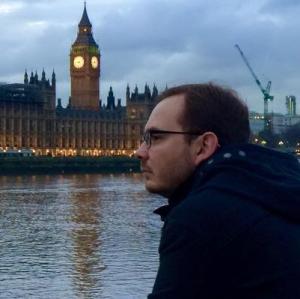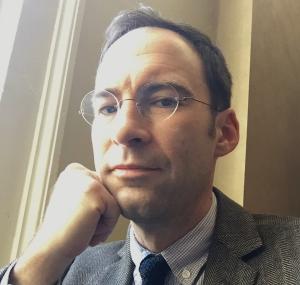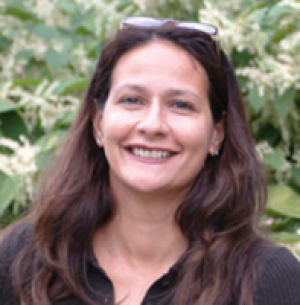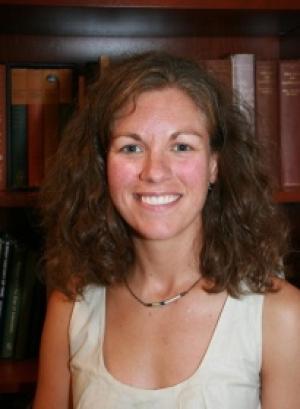Resources

[caption id="attachment_251233" align="alignright" width="424"] A “glacial erratic” on Skidegate, Haida Gwaii, British Columbia, Canada (photo by author)[/caption] “Could God create a stone too heavy for God to lift?” This question may be familiar to those of us who teach about the traditional qualities of God in the philosophy of religion classroom. The so-called “paradox of the stone” is a pithy yet fascinating riddle that helps unpack the inconsistencies and logical incongruities at the heart of the notion of omnipotence as a divine attribute. And yet, over the years I have found that even with questions as crisp and deceptively simple as this one can be, students find it hard to relate to ideas like these as anything more than abstract intellectual exercises. If students don’t know or don’t care about the Christian God, or even much about Christianity, why would they care to explore the labyrinthine twists and turns this question implies? I have found that one of my key challenges as an instructor is to create fruitful connections and open easily traversed pathways that bridge gaps between what can seem like archaic or overly abstract ideas on the one hand and familiar, even urgent, issues from our contemporary cultural discourses on the other. These, it seems, may not only be the problems of a philosophy of religion class in 2022, but are reflective of the deeper challenges that the study of religion faces in the secular liberal arts context. I teach a second level introduction to Western religious thought to undergraduates, most of whom have little if any substantive knowledge of Christianity—let alone the questions posed by religious studies. In this class, I engage with issues of faith and skepticism and the complex relationship between the two with undergraduate students from across the university. It is common to have, say, biology majors alongside fine arts students interacting with English majors who are in turn working on minors in international relations. The context is interdisciplinary and diverse. Few of these students are familiar with the broad intellectual and spiritual traditions of Christianity and yet all come to this class with their own set of questions. My role, in a class that can tend towards the abstract, is to provide points of connection where the tradition meets their contemporary experience and to guide a conversation where this encounter can be unpacked and more clearly understood—even if rarely resolved. For example, arguments for the existence of God are a staple part of any introduction to philosophy of religion. Not surprisingly, I cover the basics with Anselm and Aquinas, but I also bring in an ancient Sumerian beer recipe, a science fiction short story by Arthur C. Clarke about the nine billion names of God, and a poem by Emily Dickinson comparing train tickets to knowledge of heaven. Later in the course, we deal with another topic involving the significant challenges of the classic Problem of Evil. In addition to the traditional formulations, and various logical and evidential approaches, we look at William Nicholson’s play, Shadowlands, exploring the experience of writer C. S. Lewis and the untimely death of his wife Joy Gresham—rendered so poignantly in Richard Attenborough’s 1993 film of the same name. Interestingly, the challenge here is not necessarily to defend the existence of God in the face of clear evidence of evil. It can sometimes seem more of a challenge to convince students that it is worth arguing the case in the first place. By the time we get to this topic, it is important to have a sense of value for what religion can be and do, culturally and practically speaking, before wrestling with the tricky paradoxical puzzles that the problem of evil brings into stark relief. By the end of the course, as one topic builds on another, my hope is that students will appreciate such things as the difference between probability and possibility and the relationship between the sacred and the secular. I want them to understand that religious thought exists entwined and enmeshed in our cultural experience in ways that thwart our neat secular/sacred division. But most of all, I want them to appreciate, with as much vividness as I can manage, how religion continues to “speak” to the perennial challenges of human experience and interaction. In the most recent iteration of this course, as we approached the final weeks of semester, my students requested a topic of their own. As we passed the second-year milestone of the pandemic, they wanted to discuss the pervasiveness and power of conspiracy theories that seemed to have proliferated in the face of the ongoing global disruption that had so impacted their lives. For the students, the character of conspiracy theories appeared to parallel some of the major issues we had been developing through the course. I was certainly open to the suggestion. Typically, I would end the course with something topical, a current issue that served to draw together the various strands we had explored though the semester in practical and easily identifiable ways. But this time, I was fascinated to consider this alternative: a contemporary riddle that seemed for them so urgent and at the same time so challenging to account for. In our final discussions, I asked students to describe what was happening in those of-the-moment conspiratorial conversations. I asked them to consider scholarship on “conspirituality” and associated key examples that traced their way back to elements evocative of the New Age movement and the tragedy of 9/11. There they discovered issues of community and identity, of disenchantment and re-enchantment, and of faith and apocalyptic hope. Regardless of our conclusions in these final classes, it was apparent to me that they had located their own “paradox of the stone.” In these culminating conversations I found myself amongst the most engaged cohort of students I had ever encountered, dealing with the issues from the course in complex and applied ways in collaborative, lively discussions that really mattered to them. Indeed, inspired by my students, I went on to teach a full course on the topic of “conspirituality.” In some ways, this culminating moment around the phenomenon of “conspirituality” exemplified the challenge of teaching in the secular liberal arts context, the increasing difficulty of “translating” religious tradition for a contemporary learner, and it also offered a moment to celebrate. For me it was solid affirmation of my pedagogical efforts to bring the traditional and the contemporary together as a way of creating a flashpoint of engagement. But it was also a reminder that the classroom is a community of learners of which I am a part. Little did I anticipate that it would be the students, the focus of my teaching strategies, who would be the bridge builders, providing me with this most effective and evocative example.

Daniel Madigan, my mentor when I first began teaching Islamic studies, considers his introductory course an opportunity to help students understand Islam as a religious choice and vision. This, in contrast to a politicized framework wherein Islam, is a problem to be solved. Marshall Hodgson also refers to the vision of Islam early in volume one of his series, The Venture of Islam. He writes, “Islamicate society represents, in part, one of the most thoroughgoing attempts in history to build a world-wide human community as if from scratch on the basis of an explicitly worked out ideal.” In an earlier blog post, I recommended the use of graphic novels and comics in teaching Islam because they are substantive and because students benefit from the engagement with visually rich, multimodal texts. Courses in religious studies have an unfortunate tendency toward abstraction. Separating ideas from their cultural expression is a disservice to our students and Islamic or Islamicate culture itself, which represents the “highest creative aspirations and achievements of millions of people;” Hodgson again. If we are to help students appreciate a vision, we must show them how that vision is lived, and the cultural heritage it has built over the centuries. In this post, I want to highlight some of the online resources available through museum websites, particularly the website of The Metropolitan Museum of Art in New York, and provide ideas for how these tools could be used in the classroom. In conjunction with a virtual exploration, it would be ideal to send or accompany students on a museum visit but this is not always practicable. Fortunately, museums are committed to education and the advancement of knowledge in their mission statements and their online resources are often exemplary for that purpose. Teaching is sometimes isolating because it can be accomplished in isolation. A busy professor can close off the classroom and get through the term without doing the work of engaging outside institutions. But to do this job right, we need partners whose missions intersect with our own. In my experience, museum professionals are eager to help and they have created a wealth of resources to draw from. A small investment of time spent researching museum offerings or reaching out to a museum education office can pay huge dividends in terms of student learning and engagement. In fact, a more student-driven classroom can save time in the long run. Letting students take charge of their own learning means they are doing more of the work. Anyone who has visited The Metropolitan Museum of Art knows it is an overwhelming experience. Thanks to a sense of direction that allows me to get lost in my own neighborhood, I have spent the better part of an hour just trying to find my way to the right wing in the Met. Their website can provoke a similar experience. It requires a certain amount of detective work to identify the right online resource for your students and a significant amount of scaffolding to guide them to its best use. But there are unique opportunities to be found! Five decades of Met publications are available to search and download, sometimes in their entirety, for free. This collection includes a full online copy of Art of the Islamic World: A Resource for Educators that pairs well with an online lesson plan on “Arabic Script and the Art of Calligraphy” suitable for modified use in the college classroom. The Met website is also home to 82nd & Fifth, a series of two-minute videos in which curators discuss works of art that changed the way they see the world. These videos, including an engaging presentation on the official signature of Süleiman the Magnificent, are also available as part of a YouTube playlist. Projects like this provide useful modeling for classroom activities. A student can be tasked with exploring Islamic art and creating their own short video on how it has changed the way they view the world. The most powerful resource on the Met website is the ability to search its collection as a whole. Students searching for “Islam” will bring up thousands of entries, including photographs, historical information, and links to related objects and textbooks as available. This is a fantastic opportunity but it must be used wisely. Casting students into this sea of information without a clear purpose is not likely to be successful. As a colleague once instructed me, “Throwing everything against the wall to see what sticks is not a sound pedagogical strategy.” Certainly, the Met collection can inform garden-variety research papers and projects begun in the classroom but it can also provide an initial inspiration for detective work. Students might start with an item from the collection and generate questions based on its features and provenance. Finding an elaborate illustration of a drunken party from the Diwan of Hafiz, students may wonder about the relationship between intoxication and mysticism. Confronted with a folio from the Blue Qur’an, they might want to know more about the aesthetic and practical features of other Qur’anic manuscripts. The key is that students are puzzling over museum objects and formulating their own paths of inquiry leading to a more holistic understanding of Islam. Advancing toward the highest, creative and comprehensive level of Bloom’s Taxonomy, you could ask students to curate their own virtual exhibition using an online collection. Seeking out meaningful threads of continuity between temporally and geographically disparate objects is an enormously challenging task but the rewards for a job well done are great as well. Such an assignment, carefully wrought, has the potential to help students consider the vision of Islam as it was realized in material culture; not in abstraction, but as a source of creative renewal and inspiration across time and space.

Nancy Lynne Westfield Associate Professor of Religious Education Drew Theological School So central to my identity is teaching that when I think of the highest honor, the highest appreciation – I think of my gratitude for those who have liberated me through their teaching. I aspire, then, to instill in

Caleb Elfenbein Assistant Professor Grinnell College Last year, I began asking students in my Islam, gender, and sexuality course to write a paragraph about what they think it means to study these topics from a humanistic perspective. It’s the first thing they write for the course. This year (as with...

Sufia Uddin Associate Professor Connecticut College Since 9/11, colleges and universities have increased their course offerings in Islamic traditions and Muslim cultures. Yet, it seems that anti-Muslim rhetoric is everywhere. In Caleb Elfenbein’s recent blog, he points out that our students know only the world with our “war on terror”

Molly Bassett Associate Professor of Religious Studies Georgia State University In my first post, I described a new course-- “Religious Dimensions in Human Experience: Between Animals and Gods” -- and all of the teaching activities I have going on in it: there was planning and now teaching, writing this blog,

Molly Bassett Associate Professor of Religious Studies Georgia State University On Monday, I told the students that for the first time since I started teaching I was blown away by the entire class’s projects. Their podcasts are fantastic, and you can listen to them here. I’m tempted to keep gushing...

Molly Bassett Associate Professor of Religious Studies Georgia State University “If I wanted to write, I would have taken an English class.” – Anonymous in my intro course Looking back I’ll admit that it was more last straw than “Aha!” In fact, I’m sure there were times when analogous thoughts...

Molly Bassett Associate Professor of Religious Studies Georgia State University In her introduction to Animals in the Four Worlds: Sculptures from India (1989), Wendy Doniger observes that animals and gods inhabit the borderlands of human communities, and as I mention in a piece for Religious Studies News, this notion frames...

Nancy Lynne Westfield Associate Professor of Religious Education Drew Theological School Though this particular meeting of the Academic Standing Committee was five or six years ago, my memory of a request as filed by a student yet lingers. Bonnie, not her real name, was petitioning for a grade change from..